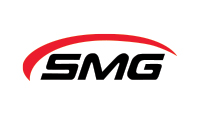We manage energy project development, environmental permitting, remediation and compliance, insustrial hygiene, health & safety, auditing, environmental management, government relations. We solve your problems in all of these areas. We move quickly and dig deeply to reach your goals. We work wherever you are.
How can SMG help you?
SMG POV
On November 25th, 2014, EPA announced its anticipated proposal for reducing ozone. According to the proposed rule, the current standard of 75 parts per billion would be lowered to a range of 65 to 70 parts per billion. Agency officials said they would also take public comments on whether they should consider going even lower, to 60 ppb. EPA touts the proposed rule as improving “public health protection, particularly for children, the elderly, and people of all ages who have lung diseases such as asthma. The updates also will improve protection for trees, plants and ecosystems.” More information on the proposed rule can be found here. Please note that the proposed rule has not yet been published in the Federal Register. Once published in the Federal Register, commenters will have 90 dates from the date of publication to submit comments.
FEATURED PROJECT
PROBLEM
A local company engaged in manufacturing imported a small amount of a chemical substance defined under TSCA. Faced with a potential EPA enforcement action with penalties assessed for noncompliance under TSCA of up to $32,500 per day per violation, the company called SMG for help.
SMG'S APPROACH
SMG analyzed the company’s current TSCA procedures and assisted the company in developing a proactive, cost-effective compliance procedure. SMG also facilitated a training program to educate employees about TSCA.
MG worked with the company to develop mechanisms that assured adherence with the policies that were being implemented for compliance. Procedures to promptly correct any potential violations and prevent future violations were also put into place.
RESULTS
SMG was able to show that the company complied with the relevant TSCA regulations and was improving their TSCA policies and procedures to assure that future issues were less likely to occur. The company was not subjected to the proposed penalties and now has mechanisms in place to maintain TSCA compliance.
